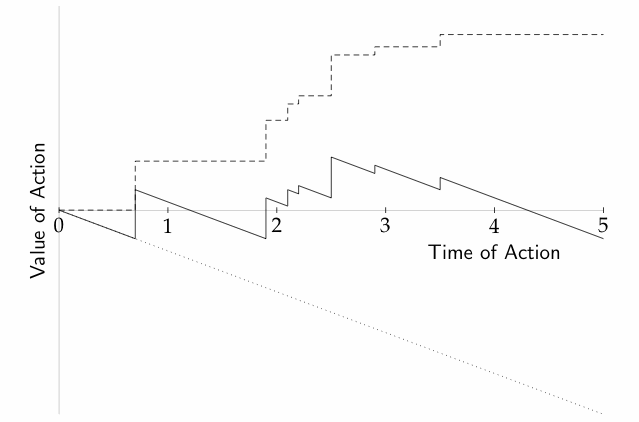Third edition of Artificial Intelligence: foundations of computational agents, Cambridge University Press, 2023 is now available (including the full text).
1.5.8 Computational Limits
Sometimes an agent can decide on its best action quickly enough for it to act. Often there are computational resource limits that prevent an agent from carrying out the best action. That is, the agent may not be able to find the best action quickly enough within its memory limitations to act while that action is still the best thing to do. For example, it may not be much use to take 10 minutes to derive what was the best thing to do 10 minutes ago, when the agent has to act now. Often, instead, an agent must trade off how long it takes to get a solution with how good the solution is; it may be better to find a reasonable solution quickly than to find a better solution later because the world will have changed during the computation.
The computational limits dimension determines whether an agent has
- perfect rationality, where an agent reasons about the best action without taking into account its limited computational resources; or
- bounded rationality, where an agent decides on the best action that it can find given its computational limitations.
Computational resource limits include computation time, memory, and numerical accuracy caused by computers not representing real numbers exactly. An anytime algorithm is an algorithm whose solution quality improves with time. In particular, it is one that can produce its current best solution at any time, but given more time it could produce even better solutions. We can ensure that the quality doesn't decrease by allowing the agent to store the best solution found so far and return that when asked for a solution. However, waiting to act has a cost; it may be better for an agent to act before it has found what would have been the best solution.

To take into account bounded rationality, an agent must decide whether it should act or think more. This is challenging because an agent typically does not know how much better off it would be if it only spent a little bit more time reasoning. Moreover, the time spent thinking about whether it should reason may detract from actually reasoning about the domain. However, bounded rationality can be the basis for approximate reasoning.



